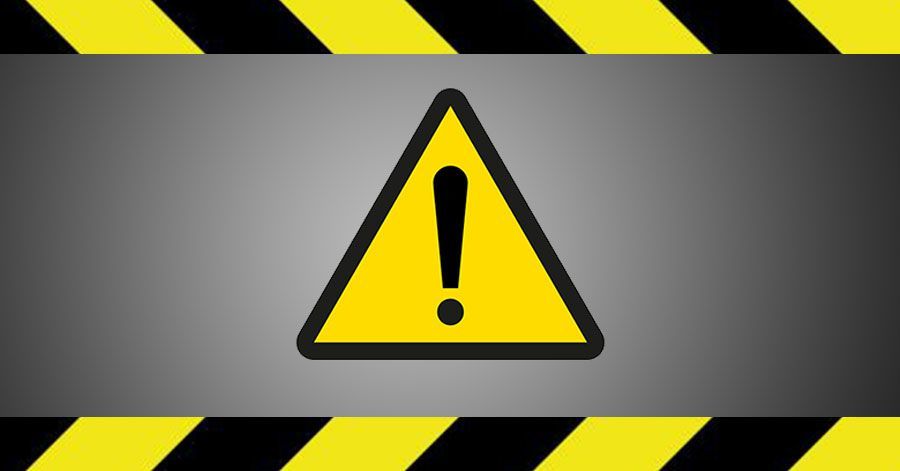
According to the Department of Labor, each year 137,000 construction workers suffer serious workplace injuries. Even worse, approximately 800 workers suffer fatal injuries on the job. Although this number is harrowing, the most surprising aspect of these numbers is that most injuries and deaths are completely preventable.
It's imperative for any construction company business owner to effectively manage construction safety and industry risk. When these myriad of factors are ignored, costs can run rampant and eventually drive the business to ruins. Continue reading to learn more about construction industry risk and what you can do to mitigate these concerns.
What Is Construction Industry Risk?
Although there is no line item on the income statement of a construction company called "construction industry risk," this is commonly one of the biggest and most volatile expenses.
For some construction companies, the cost of this risk can be up to 5% or more of the total gross income of a business. Considering most construction firms have a relatively tight profit margin, it's vital to minimize this risk as much as possible.
In the end, your ability to manage the cost of construction industry risk can be the difference between turning a profit and suffering a loss. Most importantly, it could have a direct impact on the survival of the company.
What Affects the Overall Cost of Risk?
While the cost of risk can include several factors and expenses, it most commonly includes: time spent dealing with losses, insurance premiums, and time spent managing and analyzing risk. Don’t forget managers are focused on schedule and budget for a construction project unsafe conditions causing injuries will negatively impact both.
Time Spent Dealing with Losses
Time spent dealing with losses includes all of the efforts dedicated to working with clinics and employees for a worker's compensation claim. It encompasses the time and resources spent dealing with insurance adjusters on a property claim. This factor also includes any time or money allocated for the defense of your company against a lawsuit.
Insurance Premiums
The insurance premium cost takes into effect the expense of auto, general liability, worker's compensation, property, and excess insurance. It also incorporates pollution liability, professional liability, inland marine, employment practices liability, surety, and employee benefits.
Time Spent Managing and Analyzing Risk
Time spent analyzing and managing risk accounts for all of the time expended identifying possible losses and the related causes. It also includes the time and resources dedicated to creating an effective strategy for mitigating losses, such as time spent managing human resources, safety programs, and claims.
Impact injuries have on Morale and Culture
Some people forget the impact injuries have on the morale and culture of an organization that creates additional costs you cannot quantify. Feeling safe at work makes people more productive, more engaged in what they are doing that creates a sense of satisfaction.
What Are the Biggest Risks for Construction Companies?
Attracting and Retaining Top Talent
According to the 2015 Travelers Business Risk Index, the biggest construction industry risk is attracting and retaining top talent. This issue is prevalent because of the large number of baby boomers retiring.
Today's construction firm must effectively find, recruit, and retain top talent to stay competitive in the industry. One way to potentially achieve this goal is to create a culture of safety. Safe work environments are attractive to top talent and may be interpreted as an underlying benefit.
Employee Safety
The Traveler's Business Index suggests a staggering 63% of construction companies find workplace and employee safety daunting. Managers feel as if they are not properly equipped to mitigate the risks surrounding employee safety. Although 71% of organizations implement safety training to prevent accidents, there is still a huge piece of the puzzle missing.
Emerging innovative solutions such as machine-to-person communications, wearable devices for early risk detection, and lone worker alerting can be highly affordable. It can also better equip your workers to mitigate worker risk and help keep everyone on the job safe.
Increasing Cost of Employee Benefits
Another construction industry risk in the increasing cost of employee benefits. When this spike in costs is coupled with the inability to attract and retain top talent, the importance of investing in employee safety becomes clear.
At the same time, the dedication to safety will help to minimize the effect of rising benefit costs. A growing number of managers are incorporating department-specific safety checklists and turning to technology to improve safety on the job.
Minimize Construction Risk with Premier Safety Partners
Safety should always be part of the project plan and a top concern for construction business owners. The lack of safety measures permeate at the core of various types of risk on construction worksites. Additionally, failure to pay attention to safety can affect your ability to retain top talent and manage the overall cost of employee benefits.
The safety consultants at Premier Safety Partners offer decades of expertise and experience helping construction sites identify and mitigate those risks. In addition to construction sites, we help employers across a large number industries improve safety, create a positive safety culture and become OSHA compliant, including:
We offer years of industry experience helping facility owners mitigate organizational risk. Contact Premier Safety Partners today for a free consultation.






